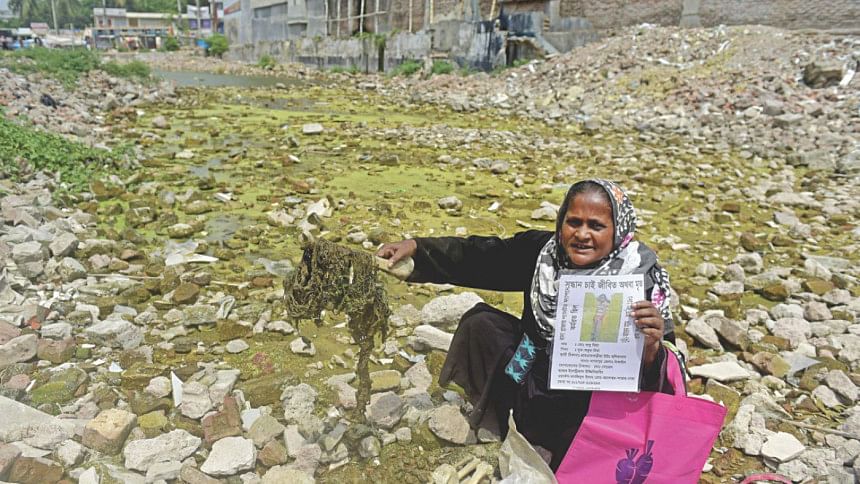A dismal record

Of the 1,134 workers that died in the Rana Plaza collapse two years ago, the families of only 100 of them got the group insurance benefit worth Tk 1 lakh each.
The beneficiaries of those workers were certainly the lucky ones, as the remaining 1,034 victims did not get a single penny from the insurer, thanks to Bangladesh Garment Manufacturers and Exporters Association's policy.
Group insurance is an insurance scheme that covers a group of people, usually employees of a common employer, members of societies or professionals in a common group.
The scheme helps reduce the problem of adverse selection, as it gives blanket coverage to those in the group, regardless of their risk factor.
At the time of the fatal event, a maximum 20 workers from each factory were entitled to come under the group insurance coverage -- and their names were chosen at random.
Accordingly, families of 100 workers of the five factories housed in the ill-fated building got the insurance money.
Similarly, beneficiaries of only 20 workers killed in the 2012 Tazreen Fashions fire got the insurance benefits, although a total of 112 workers died.
This begs the question: why were all workers not included in the scheme?
BGMEA believes that covering all workers under the group scheme would be very costly for the factory owners.
“We will have to pay much higher premiums than what we are giving now. Moreover, insurance companies will get rich overnight if we bring all 44 lakh workers under the coverage,” BGMEA President Atiqul Islam said.
He, however, said the association is thinking of ways to include more workers into the insurance scheme.
Shefaque Ahmed, chairman of Insurance Development and Regulatory Authority, said world over all workers of a factory are included in the group insurance scheme.
Furthermore, the premium rate is much lower for accidental insurance than that of other life insurance schemes, he added.
The garment sector's apex body made group insurance mandatory for its members in 2005. A factory without the scheme would be shorn off documents, including UD for exports.
BGMEA has set five slabs for giving premiums to insurance companies based on the number of factory workers.
A factory that has 1-500 workers pays Tk 26,000 as annual premium, which goes up Tk 43,000 for a factory with 501-1,000 workers, Tk 97,000 for 1,001-2,500 workers, Tk 142,000 for 2,501-5,000 workers and Tk 225,000 for 5,001 plus workers.
From fiscal 2014-15, the quota for workers under the scheme was extended to 25 and the benefit amount raised to Tk 2 lakh.
If an accident occurs in a factory and whatever the casualty is, only 25 workers will get insurance coverage.
If a worker dies or becomes disabled even outside the factory, he/she is entitled to the insurance facility.
So far, around 2,500 of the 4,000 active members of BGMEA have introduced the scheme for their workers.
Around 25 lakh workers are employed in the 2,500 factories, according to BGMEA.
“The premium a factory owner gives to insure their workers is very little compared to their income. So, the benefit is very small,” said Wajedul Islam, a labour leader.
Islam said the insurance benefit should be at least Tk 5 lakh for each worker instead of current Tk 2 lakh.

 For all latest news, follow The Daily Star's Google News channel.
For all latest news, follow The Daily Star's Google News channel. 




Comments